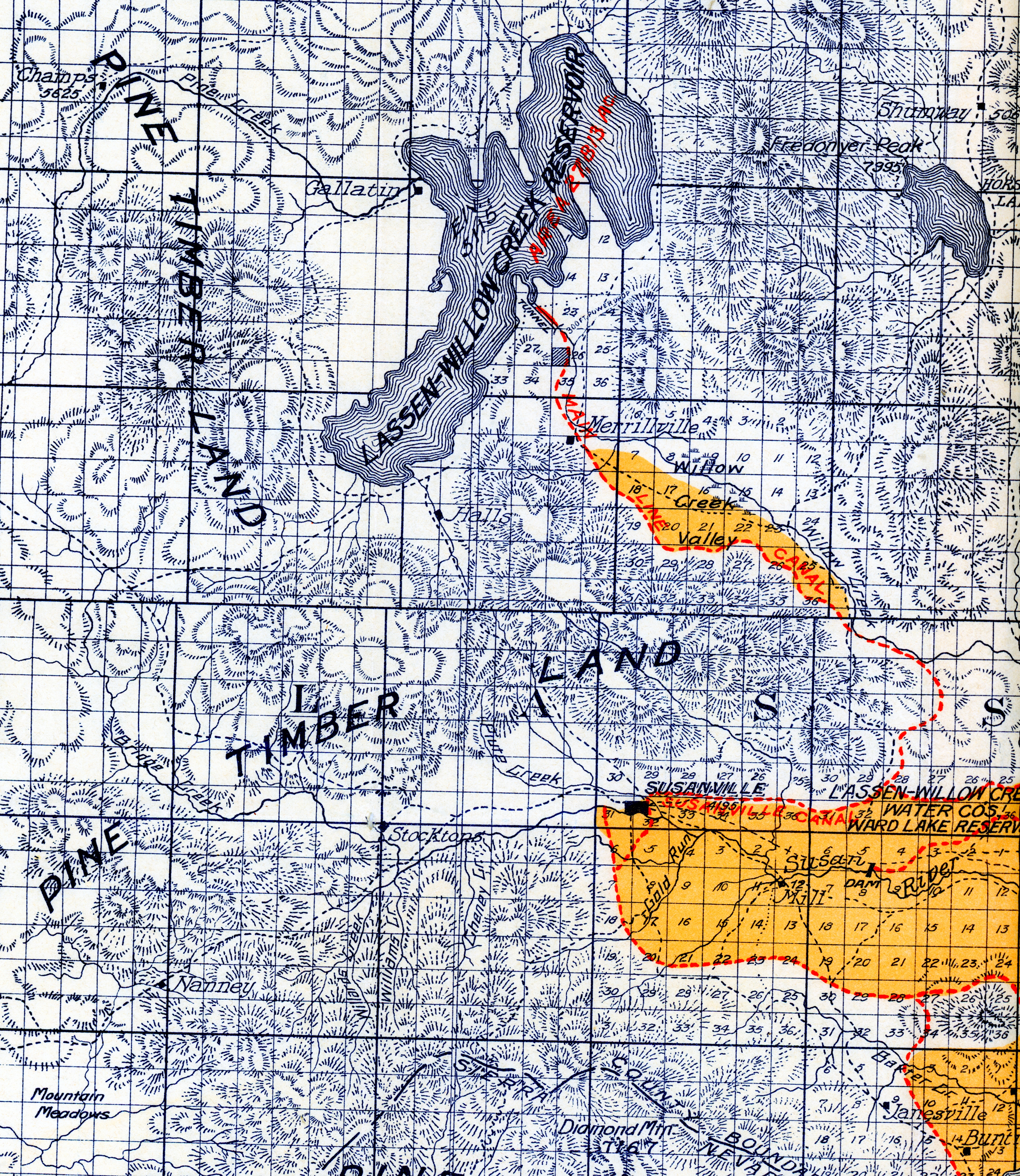
During the early 1900s, it appeared any attempt to tap Eagle Lake for irrigation were doomed, since previous proposals over water rights etc were being litigated. On the other hand, it did not stop entrepreneurs who dreamed there was incredible wealth to be mde to deliver that water supply.
Enter Lassen Willow Creek Water Company, (LWC) formed in 1905, and its composition of the company were well known locals—Ben Leavitt, W.H. Earl, Charles Emerson, James Elledge and B.F. Gibson. Before they formed, they knew they had a competitor, A.F. Dixon who had filed for tunnel and water rights on December 8, 1904. One of LWC’s obstacles was to obtain a tunnel right-of-way from the Government Land Office to bypass Dixon’s claim. The Company pronounced Eagle Lake as a reservoir and filed for water rights to every tributary and excess flood waters of Susan River. They declared that this water being held in the lake as a storage reservoir.
This ingenious method of LWC to obtain the necessary right-of-way across public land was not to be resolved so easily. The LWC’s application for the tunnel right-of-way was rejected by the Government Land Office, as Dixon’s application had first priority. The Land Office wrote in its decision, “This office is of the opinion that it was never intended that a natural lake which is already a source of water supply. should be appropriated as a reservoir site.” The Land Office gave the LWC sixty days to appeal their decision.
A month later, the LWC filed a new tunnel right-of-way with the Land Office. They called it the Pine Creek Outlet Tunnel. Ultimately, the LWC decided to bypass the Land Office. They relocated their tunnel site, just north of Dixon. They secured the lands owned by the Cartwright Brothers. By mid-April 1906, shafts were being drilled and work was being prepared on the tunnel’s entrance and outlet.
It appears LWC was making great progress. In June 1906 the company announced it had signed a contract with the Granite Rock Company to construct the mile-long tunnel. It was estimated to cost $500,000 and everything came to halt since LWC did not have the funds. LWC’s demise occurred on June 7, 1910 when it sold its records and surveying equipment to E.N. Prouty for $900.